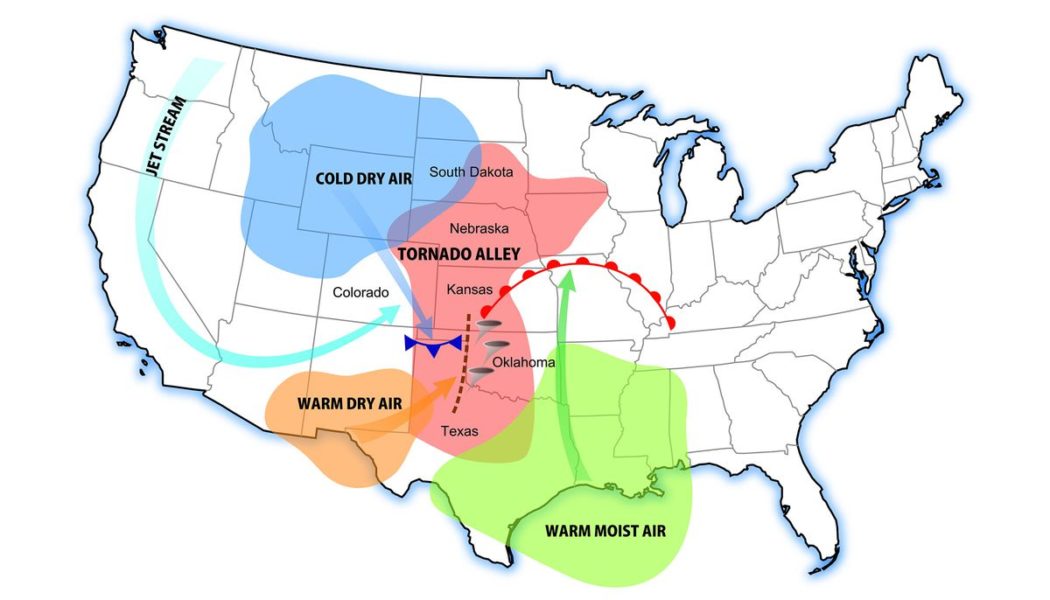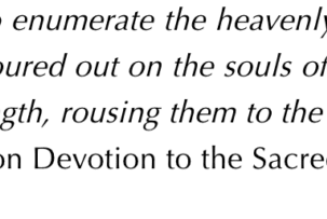Shortly after midnight on March 3, 2020, Moe Odhwani woke up to find his cellphone buzzing violently beside him. The screen told him that a tornado was nearing his home in East Nashville, Tennessee. In the past, these alerts had never amounted to much — but he took shelter in the garage just to be safe.
It was a good thing he did. About seven to 10 minutes after the warning, the tornado howled over the area with winds in excess of 130 miles per hour. “The whole building started to shake,” says Odhwani, a 32-year-old who works in logistics. He worried that he wouldn’t survive: “Just, like, ‘This is it? This is how I’m going out?’”
Odhwani stayed safe, but the storm in the area killed 25 people that night. Thinking back on how little warning he had, he says, “Seven or 10 minutes is definitely not enough time.”
Tornadoes are some of the most deadly and damaging weather on Earth. The next day, “it was like a bomb went off in East Nashville,” Odhwani says. “Everything was destroyed.” Yet people in harm’s way are only given minutes to take cover from winds that can surpass 250 or even 300 mph.
This is one of the most frustrating, stagnant problems in meteorology. As of 2011, the average lead time for tornado warnings was just around 13 minutes. But as the Washington Post has reported, lead times have been getting worse in recent years, dropping to 8.4 minutes between 2012 and 2020. Some people have even less warning. (Odhwani says he didn’t hear the city’s warning sirens, and might have kept sleeping if his phone wasn’t nearby.) Think about it: If you had less than a quarter of an hour to prepare for devastation, what could you accomplish?
The truth is that those minutes of warning actually represent an improvement. “If you look back into the ’50s, even as late as the ’70s or the ’80s, tornadoes … they kind of came out of nowhere,” says Jeff Weber, a scientist at the University Corporation for Atmospheric Research. In 1990, the average lead time was five minutes.
Between 1990 and 2019, tornadoes killed, on average, 68 people per year, according to the National Weather Service. Tornadoes can also cause billions of dollars’ worth of damage in any given year.
The lack of progress on tornado warnings is frustrating considering just how good meteorologists have gotten at predicting other severe weather, including hurricanes. In 2019, the National Hurricane Center’s predictions three days in advance of a storm were more accurate than its predictions one day in advance of a storm in 1990.
When tornado warnings do come, an actual twister may not follow. The vast majority of tornado warnings issued by the National Weather Service prove to be false alarms; in some years, the false alarm rate can be as high as 70 to 80 percent. Tornado forecasting hasn’t improved much since the 2011 tornado disaster in Joplin, Missouri, killed 162 people.
Tornado predictions are clearly an unresolved problem in meteorology. But weather researchers are optimistic they can solve it.
“There’s no doubt in my mind that in 100 years from now, we’ll probably be able to have a far greater accuracy for warning communities when a tornado is going to literally drop out of the sky,” Weber says.
To do that, scientists will need to confront these storms head-on — and start to solve the mystery of how they form.
Why forecasting tornadoes is so hard
Why is it so hard to predict when a tornado is going to touch down?
Scientists know tornadoes mainly form out of huge, violent “supercell” thunderstorms, which are particularly violent storms that rotate as if they were mini hurricanes. These storms are particularly common in the middle and southeastern portions of the United States, where moist, warm air from the Gulf of Mexico meets dry air from the Mountain West and Southwest. They’re especially likely to form during the spring and early summer.
:no_upscale()/cdn.vox-cdn.com/uploads/chorus_asset/file/22643200/Tornado_Alley_Diagram.jpg)
The problem is that meteorologists can look at two supercell thunderstorms that seem identical, and only one of them will produce a tornado. “Why is not well understood,” Amy McGovern, a meteorologist at the University of Oklahoma, says.
This is also why the false alarm rate for tornado warnings is so high: Forecasters just can’t easily tell when a storm that looks like it could produce a tornado actually will.
Scientists do understand the ingredients that go into creating the type of supercell storms that produce the most violent tornadoes.
Check out Vox’s video on why the central US spawns so many tornadoes:
You need a lot of moisture in the atmosphere and a lot of wind shear, or variations in wind speed and direction (this gets a storm spinning). You also need atmospheric instability, which allows updrafts to occur, and lift, or upward motion of air that gets the storm to spin along a vertical axis.
“Each of those, you can think of them as like four knobs … and depending on how much you tune one versus the other, that will determine what type of thunderstorm you get and how likely it is to produce a tornado,” says Robin Tanamachi, a tornado scientist at Purdue University.
:no_upscale()/cdn.vox-cdn.com/uploads/chorus_asset/file/22643651/updradft.jpg)
:no_upscale()/cdn.vox-cdn.com/uploads/chorus_asset/file/22643657/GettyImages_633646240.jpg)
But whatever sparks a tornado happens on a much smaller scale — perhaps at the level of individual molecules in the atmosphere — and is highly impacted by peculiarities of the local geography. “Even trees can disrupt surface circulation as opposed to grassland,” and that can affect tornado formation, Weber says. The atmospheric conditions that produce a tornado in Oklahoma would not necessarily produce a tornado in Alabama.
Many storms even produce rotating winds without leading to a twister. “The question that we’re trying to solve is, how do you take that rotation and concentrate it to a point where you have this very narrow, intense vortex that we call a tornado?” Tanamachi says. Meteorologists haven’t agreed on an answer to that question yet.
It’s possible, if counterintuitive, for tornadoes to form from the bottom up — to start as a disturbance on the ground that then connects upward to the thunderstorm. “There may be a small eddy or swirl at the surface that, for whatever reason, happens to connect with the updraft in the thunderstorm,” Tanamachi says. “And then it’s like the skater spinning her arms, you know, she pulls her arms in and stretches and spins faster and faster.”
But it’s also possible for the tornadoes to descend from the storm cloud — or a mix of the two: “In some cases, they both happen at the same time,” Tanamachi says. “The tornado seems to form simultaneously all the way from the top to the bottom all at once.”
Why don’t scientists know how tornadoes form? Currently, Tanamachi explains, weather radar just can’t get a good glimpse of the rapid, relatively low-altitude conditions that lead to twisters. “It seems like the processes that control whether tornadoes form or not happen on timescales of a minute or less, and within just a couple hundred feet of the surface, which is a very hard area to scan with radar,” she says.
So whatever the trick to tornadoes is — whatever differentiates a thunderstorm that produces them from thunderstorms that don’t — is concealed as by a magician’s sleight of hand. The way to improve tornado predictions, researchers say, is to confront them head-on.
How to solve the tornado problem
:no_upscale()/cdn.vox-cdn.com/uploads/chorus_asset/file/22643689/899201074.jpg)
Hurricane forecasts have gotten so good over the past decades, Weber explains, because scientists have been able to intensely study their every move. It helps that they move more slowly than tornadoes and that they persist for days. “We can fly planes into and out of the hurricane eyewall and collect all sorts of data.”
Tornadoes, by contrast, are smaller and short-lived. The scientists who study them don’t have that wealth of data to funnel into their forecasts. (Weber jokes that scientists sometimes feel cursed: Tornadoes rarely seem to appear when scientists go looking for them in the field.) To make matters worse, tornadoes easily damage scientific equipment. “Any type of sensors or equipment that you have in place will often be destroyed before they can sample all that you’re hoping to gather,” Weber says. “So being able to get a full data set of that phenomena is very difficult.”
But it’s not impossible. Researchers need to make more direct observations of tornadoes, Weber says — they need to chase them. Scientists “are literally running down and trying to place sensors on the ground in front of tornadoes, where they think the tornado track is going to go, so they can get the data,” he says. (The 1996 movie Twister, he says, is “not too far from the truth” about tornado research methods: “When tornadoes come through town here, all the citizens go down to the basement and all the scientists go to the roofs.”)
Some very careful citizen science could help, too. “Even if we just get incredibly good photographs from all the angles of a tornado … that can lend knowledge,” Weber says. This does not mean you should run toward a tornado. Those who study tornadoes minimize the risk by chasing after them, meaning that they only follow a storm that’s moving away from them.
Upgrades to the nation’s weather radar system could help, too. “The current radar network that we’re using dates from the late 1980s,” says Tanamachi, the Purdue meteorologist. It also involves components that have to spin, which adds some lag to the data collection. Newer systems called phased array radar, she says, don’t need to mechanically spin, and could scan an area more quickly, possibly helping meteorologists see tornadoes forming on a more granular level.
At the University of Oklahoma, McGovern is trying to put artificial intelligence to work. Machines could pick up on hard-to-spot patterns that already exist in the radar data. She’s not sure AI can solve the mystery of how tornadoes form, but believes it can help “at least to bring the false alarm rate down.”
Why meteorologists are optimistic that they can make better predictions in the future
What if tornadoes are just too chaotic to fully understand, and we won’t ever be able to predict them with precision? The researchers I spoke with all insist that, at the very least, we can do better than several minutes of lead time.
It is theoretically possible to precisely predict a tornado an hour out, Tanamachi says. This might take modeling every single molecule of the atmosphere and running it in a simulation. “Once we have that capability, we might be able to solve tornado genesis,” Tanamachi says.
This molecule-by-molecule modeling might sound like science fiction now, but it could be possible in the future. “There are specialized branches of physics where they literally do that” — model every molecule — “but just usually in very tiny volumes of space, like, you know, a cubic centimeter,” Tanamachi replies. It’s a matter of scaling that capacity up over time.
Even if meteorologists don’t succeed in predicting tornadoes, it’s worth the effort to try. This is an area of science where just small improvements could make a meaningful impact in the real world.
A few weeks ago, a hailstorm — another incredibly hard-to-predict weather phenomenon — pelted McGovern’s house. Her family only had 10 minutes of warning before the storm hit. “We personally lost windows in our house,” she says. “If I had an hour’s warning, what else could I have done? I couldn’t move my house out of the way. But maybe I could have taken other precautions.”
Odhwani, the tornado survivor in East Nashville, says that more time would have allowed him to “call some of my friends here that were actually sleeping,” and to help them get to safety. They too survived the storm, but he heard about others who weren’t so lucky — like two people who died in the storm as they were leaving a cocktail bar. “There was not really much of a warning for anyone,” he says.
Correction, June 8, 5:40 pm: This article was corrected to include more recent estimates of tornado warning lead times.
Join Our Telegram Group : Salvation & Prosperity







